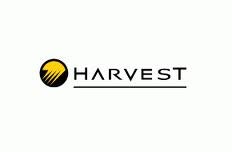Checking my track record recently, I found that my bearish calls were spot on. For instance, I warned investors about Forest Oil and Quicksilver Resources when they were at $7.14 and $2.93, respectively. Forest and Quicksilver are at $6 and $2.13, respectively, today. I also warned about Africa Oil, which was at $10.60 then. The stock is at $7 today. Despite the fact that the Dow has been hitting new highs lately, the rising tide obviously didn’t lift all the boats.
Good news also came from Gabon, and some good drilling results in 2013 from the high-potential exploration prospects in Indonesia and Oman will definitely propel the stock higher.
Niko Resources Ltd. (TSX: NKO) has natural gas and oil assets offshore of India and Indonesia, and in Bangladesh, Trinidad, Madagascar, and Pakistan. After a series of failures and dry holes, the stock has corrected, currently standing at $6.60 with an EV at $500 million.
From an EV/CF perspective, Niko Resources Ltd. (TSE:NKO) trades at a low 4x multiple. Based on the latest news, the company’s CF is $125 million (annualized). With a production at 21,000 boepd (95% natural gas) and 63 MMboe 2P reserves (95% natural gas), Niko trades at $20,700/boepd and $7.93/boe of 2P reserves.
Additionally, Niko Resources Ltd. (TSE:NKO)’s natural gas is primarily sold to India. The Rangarajan Committee recommended to the Government of India a pricing mechanism for natural gas produced in India. This recommendation is currently being reviewed by the government. Based on current inputs into the pricing formula, the price for natural gas sales from Niko’s assets in India would increase to $8 – $8.50/MMBtu, compared to $4.20/MMBtu for current natural gas sales from the D6 Block. The company believes that this change will be approved, positively impacting its cash flows.
Niko Resources Ltd. (TSE:NKO) is interesting at the current levels. If the company is lucky with its 2013 exploration program, the upside potential can be significant.
Let’s fly to the neighboring Thailand, where Pan Orient Energy Corp. (CVE:POE) primarily operates. Its Canada-based heavy oil project is still at its infancy.
Pan Orient produces 1500 bopd (100% oil) currently. The company is debt-free, holding $143 million cash as of Q3 2012. The market cap is $180 million, and the EV is as low as $37 million, resulting in one of the lowest valuations in the sector. There aren’t many oil-weighted companies around that trade at $24,700/bopd (100% oil).
The company’s weakness is its 2P Reserves, which were 1.1 MMboe in December 2012. Thus, Pan Orient trades at $33.6/boe of 2P reserves, which is a relatively high metric. However, for the determination of crude oil reserves, no reserves were assigned to the new pool discovery with the L53-DC1 appraisal well in Concession L53.
The high 2P reserves valuation is also offset by the low EV/CF ratio. Based on Q4 2012 production, the company generates about $40 million in cash flow annually, which translates into a very low 1x multiple for the EV/CF ratio.
If the ongoing exploration program in Thailand and Indonesia shows some success, the company will add significant reserves, further reducing risks in its acreage. We will know more about it by April 2013 when an update will be issued.
Safe Landing
Let’s land in New Zealand, where we’ll find TAG OIL LTD (TSE:TAO), which owns 2,953,810 net acres of land there. In Q3 2013, Tag produced 1,727 boepd from the Taranaki Basin, but it currently has more than 10 wells. Once Tag’s infrastructure project is complete in April 2013, the company will become completely self-sufficient in producing, processing, and marketing all oil and gas it drills. Eventually, Tag will initiate production from all its oil and gas wells that have been drilled but are not yet producing, and it expects to hit 5,000 boepd in Q1 2014.
As of Q3 2013, Tag was debt-free with $72 million in cash. With an EV at $150 million and 6.6 MMboe of 2P reserves (March 2011), TAG trades at $30,000/boepd and $22.8/boe of 2P reserves.
The company begins drilling the first two wells in its East Coast Basin in April 2013, targeting several high-impact play objectives. Additionally, Tag completed a seismic survey within its properties in the Canterbury Basin. Interpretation of the seismic data is underway, and could identify potential well locations. The Canterbury Basin is an under-explored area with many geological similarities to the productive Taranaki Basin.
Conclusion
Several moving parts and additional criteria have to be assessed before an investor dips his buying toes into an overseas energy producer. The Brent pricing is often offset by the risk of the
expropriation of assets by foreign governments, local opposition, regulatory changes, political instability, and social unrest. However, this isn’t a perfect world, and no company is ideal. A prudent investor has to weigh the pros and cons and act accordingly.
The article Is Now The Time To Buy These 5 Overseas Energy Companies? originally appeared on Fool.com and is written by Nathan Kirykos.
Copyright © 1995 – 2013 The Motley Fool, LLC. All rights reserved. The Motley Fool has a disclosure policy.
